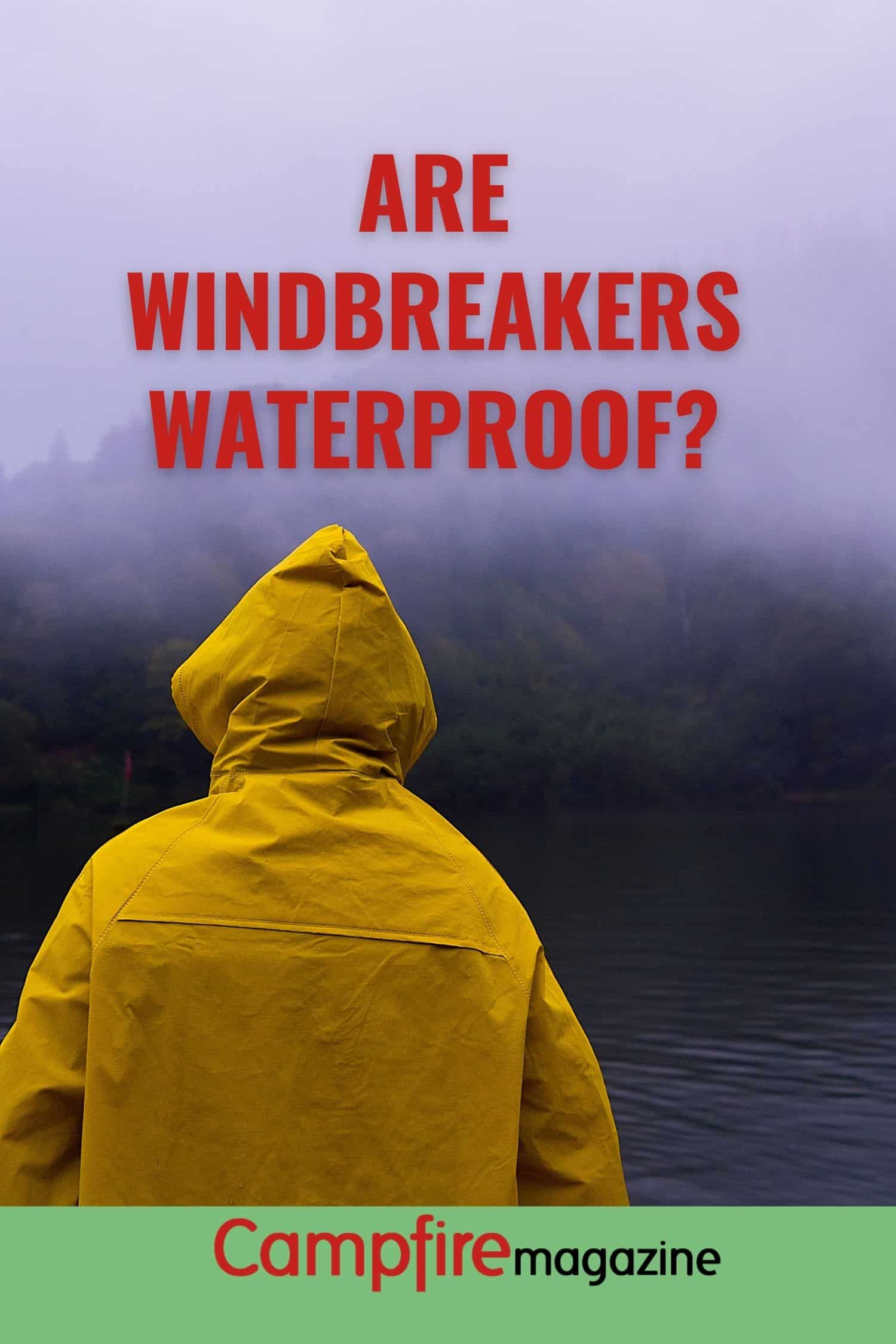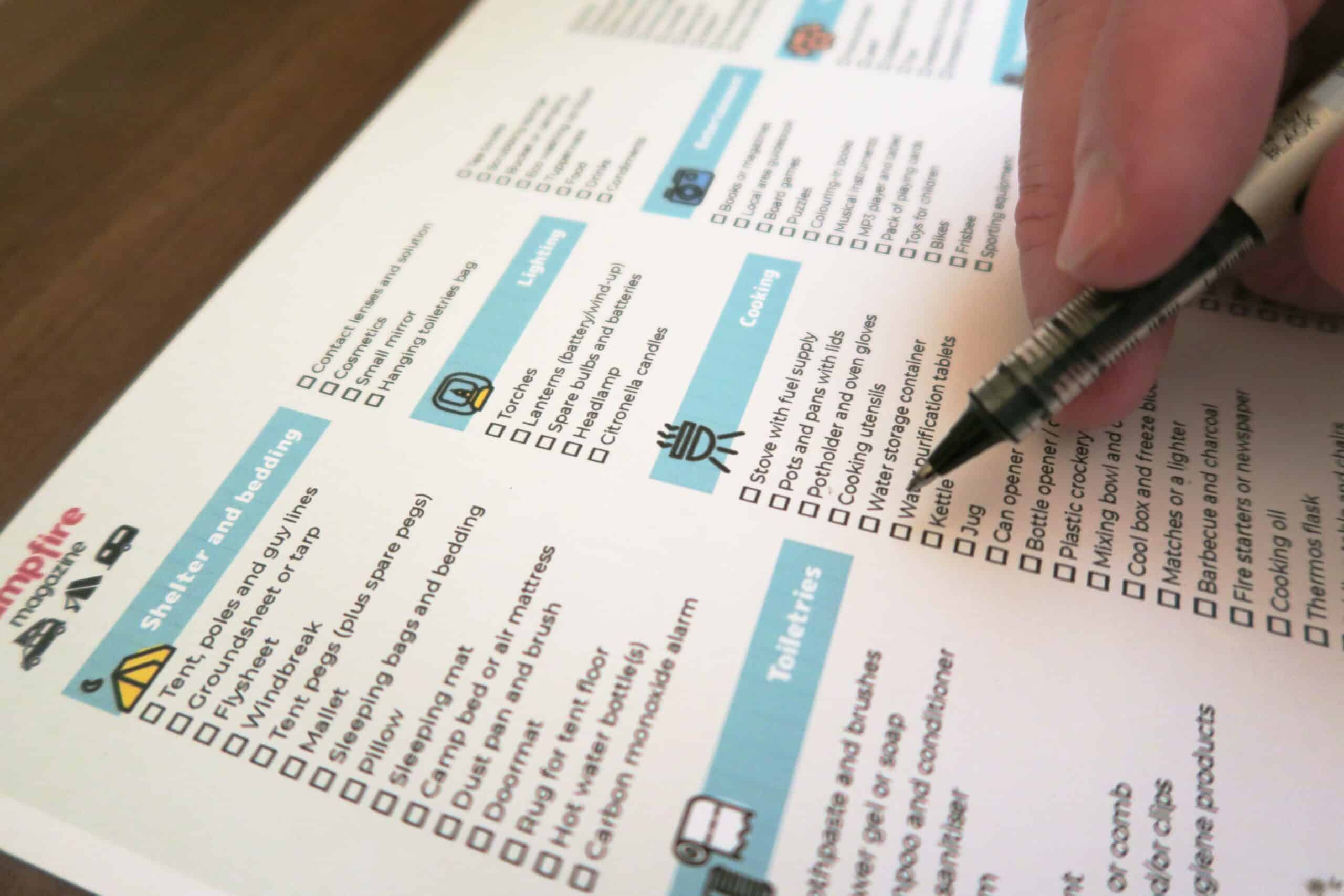Getting out into the great outdoors is something that many people enjoy, but the weather may not always be on your side. This is especially true in the UK where it may be beautiful sunshine one minute and blowing a gale the next. If it’s the latter, you’ll probably be in need of a windbreaker. But what about when it rains; is a windbreaker waterproof as well?
Unfortunately, your windbreaker isn’t waterproof. While they are designed to withstand blustery days, keeping you warm, they aren’t quite as adept when it comes to keeping your dry. Some windbreakers may be water-resistant, but this doesn’t mean they’ll keep water out as well as waterproof coats. For this, you’d need a rain jacket.
But despite this, the windbreaker is still an essential piece of outdoor gear that many adventurers simply cannot do without. Let’s take a closer look.

What Is A Windbreaker?
A windbreaker is a type of coat that is primarily designed for warmth, particularly on windy days. Unlike other types of coat, the windbreaker typically features a tight fit and elasticated waistbands and cuffs. This allows the wearer to tighten the jacket, effectively keeping out any chilly breezes.
While most windbreakers of some sort of water resistance, they are not waterproof. This means that they may be suitable for wearing in light rain or for shorter periods of time during wet weather. However, if you will be spending a lot of time in the rain, a windbreaker may not be quite as suitable.
One of the best things about the windbreaker is that it is a very lightweight garment. Despite this, it is still incredibly warm. These jackets are typically made from things like nylon or polyester and this is what gives them their lightweight design. Furthermore, this material provides the wearer with excellent breathability, so while you will be warm, you won’t be sweaty.
Are There Different Types Of Windbreakers?
Windbreakers are known to be versatile jackets and as such, there are several different types which are tailored to various needs.
- Water resistant windbreakers are those that feature a water resistant material and the type that we will be placing most of our focus on throughout this article.
- Insulated windbreakers feature an interior lining that is typically made from cotton or fleece. These are better for colder weather and will provide the wearer with a much more significant level of warmth.
- Tricot windbreakers are one of the thickest types and are excellent for colder conditions. They are, however, far less water resistant and so many not be suitable for use in very wet or rainy climates.
- Single layer nylon windbreakers are one of the most popular types on the market today. They are made from one piece of thin nylon fabric and will block out wind while offering excellent breathability. Furthermore, this type of windbreaker is ideal for physical activity such as running or hiking as it won to make the wearer overly warm.
- Polyester windbreakers are a little heavier than the nylon versions but they are also a lot quieter when you are moving. If you don't want something that rustles as you move, this might be the best option. What's more, these windbreakers tend to offer slighter better water resistance and are therefore, more suited to all weather types.
What’s The Difference Between Water Resistant And Waterproof?
A waterproof jacket or any other garment for that matter is designed to keep water out. In the case of a waterproof jacket, the wearer would be able to go out in seriously wet conditions and anything under the jacket would remain dry. In short, a waterproof jacket will create a barrier that water cannot pass through.

In contrast, a water resistant jacket, like your windbreaker, is able to resist water to a degree. You might think that wouldn’t be sufficient, but it will surprise you to learn that many modern water resistant materials offer a very good level of protection.
These garments work because they have a very tightly woven design that is incredibly difficult for water to pass through. For the most part, moisture will simply roll off. However, it is important to keep in mind that there comes a point where water resistant clothing can no longer handle the moisture and it will penetrate. But, it takes a lot.
Why Aren’t Windbreakers Waterproof?
One of the main reasons that windbreakers and other types of water resistant clothing is not fully waterproof is down to breathability. If you imagine that a waterproof material could be compared to wearing a plastic bag, you can begin to appreciate how sweaty you’d probably get underneath.
Since a windbreaker is typically intended for people who will be doing physical activities outdoors like hiking, climbing, skiing or anything else, it goes without saying that you’re bound to build up a sweat. In a waterproof jacket, this sweat would have nowhere to go and you would end up feeling very uncomfortable, not to mention a little whiffy!
The windbreaker gives you a generous level of water resistance and warmth along with exceptional airflow that keeps you dry and cool regardless of what you get up to. Shoud you need something warmer we suggest looking at our down free jacket article
So, Do Windbreakers Have A Limit?
Much like anything, there is only so much that your windbreaker will be able to withstand. We will begin by reiterating the fact that a windbreaker is only able to take so much exposure to water before it says ‘enough is enough’ and the moisture will begin to seep through. But for the most part, they are pretty resistant and unless you are in a torrential downpour for hours, it will likely give you the protection you need to stay dry.
Furthermore, you should consider how suitable a windbreaker will be for very cold conditions.
It is true that these jackets are superior at blocking out a blast of wind but that doesn mean that they are designed for a trek across the Antarctic.
The material of the windbreaker is very lightweight and thin. This means that they are typically better for cooler days where there is a chance of wind. Normally, a windbreaker would be worn in slightly warmer, unpredictable weather. They are also excellent for layering.
What Are The Benefits Of A Windbreaker?
While a windbreaker may not be able to offer you everything, (what can?), there are many reasons that these are coats that are worth investing in.
Windbreakers are exceptionally versatile pieces of outdoor gear, it is little wonder that they are so highly favoured by outdoor enthusiasts. With that in mind, let’s explore some of the benefits you can expect from your windbreaker.
- Windbreakers are very lightweight. Not only does this mean that you won’t feel weighed down by your clothing when you are out and about but they are also incredibly easy to pack into a bag. If you’re out on a warm day with the chance of the wind picking up, you can pop your windbreaker in your rucksack and forget about it until you need it.
- Most modern windbreakers are made with nylon or polyester but feature additional elastane fibres which make them very comfortable owing to the fact that you always get a good fit. Not only this, but these fibres ensure that the wind breaker remains flexible and won’t restrict your movement. After all, if you’re being physical, you don’t want to feel constricted.
- One of the best things about the windbreaker is that it offers a lot of versatility. If you are looking for a go-to coat that will cover you for most of your outdoor pursuits then this is a great option.
- With so many adventurers turning to the windbreaker for practicality, it was only a matter of time before these coats became more of a fashion statement. But that isn’t to say that these stylish coats aren’t effective. Many manufacturers have cottoned on to the fact that people want a coat that works well but also allows them to show off their style and personality. As such, when you are shopping for a windbreaker, you won’t be short of options.
Conclusion
A windbreaker is a thin, lightweight jacket that is ideal for keeping warm and dry on mild days where light rain and wind may be expected. They are not suitable for very cold weather owing to their lightweight design and while they are not waterproof, they do offer a suitable level of water resistance.
Enter your text here...

